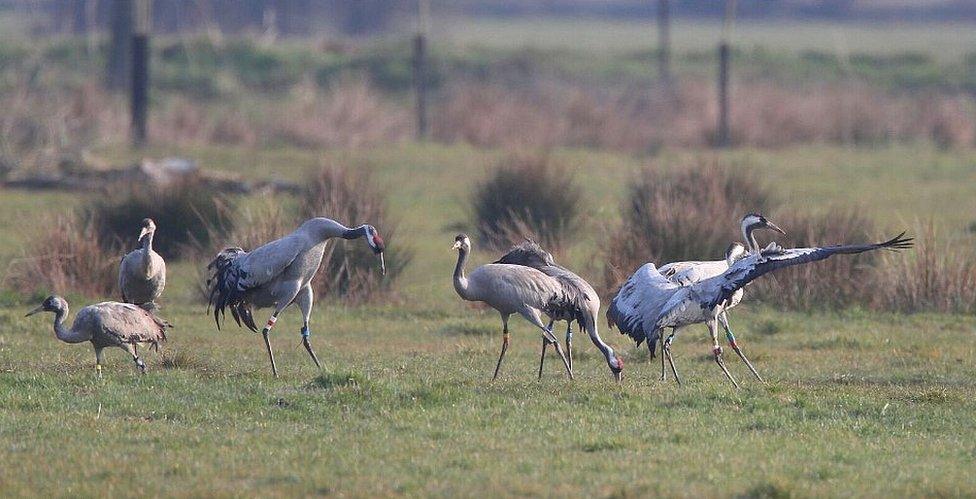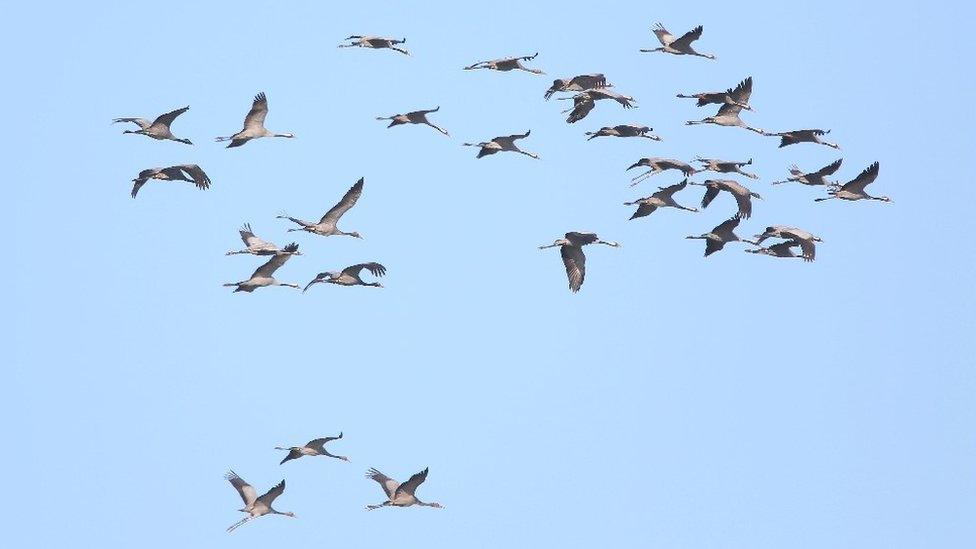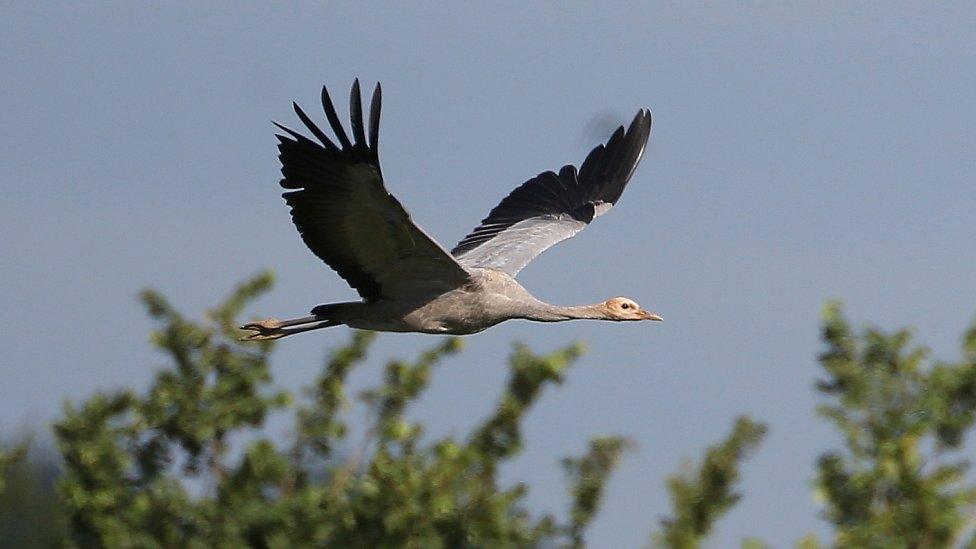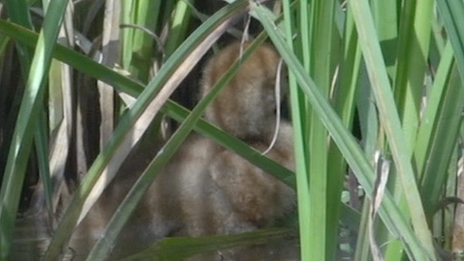Scientists learn from cranes caught in floods on Somerset Levels
- Published

The flooding forced the birds to spend two extra hours a day searching for food
Floods on the Somerset Levels gave scientists a rare chance to study the effect of extreme weather on wildlife.
A new study shows in 2013 a flock of cranes were forced out of their usual roosts and feeding sites, and spent two extra hours a day searching for food.
They were being studied as part of a project aimed at reintroducing 70 of the birds to the South West.
Experts said "valuable insights" were gained by being "in the right place at the right time".
The cranes were being tracked by researchers from the University of Exeter, the Wildfowl and Wetlands Trust (WWT) and the RSPB when the floods hit.
Geoff Hilton, of the WWT, said: "Shallow winter flooding is normal on the Somerset Levels, but no one expected the crane flock to end up at the centre of floods so severe that they became a global news story.

The survival and breeding behaviour of the cranes was being studied when the floods hit
"They were literally pushed to the edge but they pulled through in the end.
"Extreme weather events are inherently unpredictable, so it is very rare for wildlife researchers to be in the right place at the right time, able to monitor in detail how animals cope. We've gained valuable insights here."
Damon Bridge, from the RSPB in Somerset, said "It is encouraging that although the floods were extreme that winter, large in extent, and disruptive to the birds' usual pattern - they survived.
"They are remarkably resilient, adaptable and tough creatures, character traits that will serve them well as they gain a permanent foothold once again in the Levels and Moors."
The researchers were studying the survival and breeding behaviour of 70 cranes released by the Great Crane Project - an attempt to reintroduce the species to the South West.
The study has been published in the journal Scientific Reports.
- Published6 August 2015

- Published17 March 2015

- Published8 June 2014
